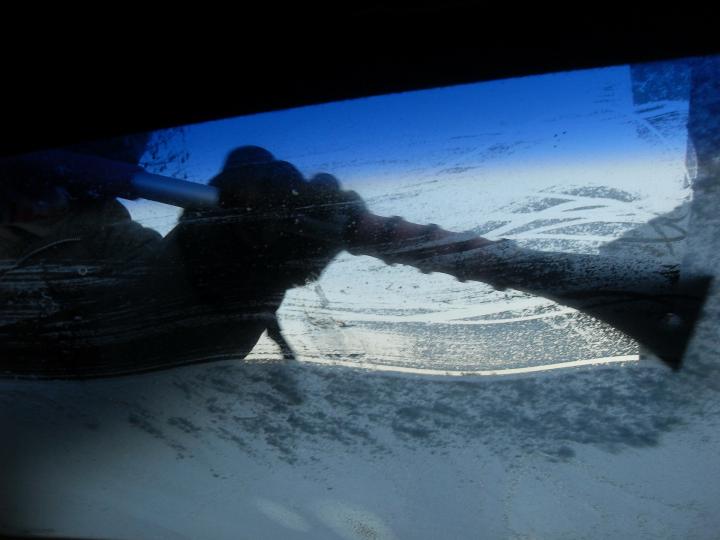Emergencies can happen to anyone. Prepare for the worst-case scenario (especially in wintertime) by keeping the following supplies in your winter car kit!
Whether you run out of fuel, puncture a tire, or slip off a snowy road, a car emergency kit can help you get back on the road safely and quickly.
In addition to the items listed below, keeping a cell phone on hand is highly advised. Make sure your phone is charged every time you get in the car and keep a spare cell phone charger and a rechargeable battery pack in your emergency kit as well.
CAR EMERGENCY KIT LIST
Keep the below items in a bag in your trunk. Ideally, we’d suggest keeping these items in a clear, plastic container so it’s easy to see and locate everything. You can buy a pre-packaged kit or create your own.
Minimum Supplies:
In an emergency situation, in addition to a full tank of gas and fresh antifreeze, the National Safety Council recommends having these with you at all times:
- Blankets, mittens, socks and hats
- Ice scraper and snow brush
- Flashlight, plus extra batteries (or a hand-crank flashlight)
- Jumper cables
- First-aid kit (band-aides, adhesive tape, antiseptic wipes, gauze pads, antiseptic cream, medical wrap).
- Bottled water
- Multi-tool (such as a Leatherman multi-tool or a Swiss Army knife)
- Road flares or reflective warning triangles
- Windshield cleaner
Extra Supplies for Frigid Weather
For those in wintry snowy areas, add the below items to your emergency kit. (If it’s balmy all winter where you live, be thankful that you don’t need all of this stuff!)
- A bag of sand to help with traction (or bag of non-clumping cat litter)
- Collapsible or folding snow shovel
- Blanket
- Tire chains and tow strap
- Hand warmers
- Winter boots for longer trips
- Sleeping bag for longer trips
Note: Use salt for de-icing driveways and roads. (Excess salinity can damage vegetation and contaminate groundwater, however. So, with this in mind, salt your driveway only when you must, and try not to use more than necessary.)
Other Essentials:
- Small fire extinguisher (5-lb., Class B and Class C type) in case of a car fire
- Tire gauge to check inflation pressure in all four tires and the spare tire
- Jack and lug wrench to change a tire
- Rags and hand cleaner (such as baby wipes)
- Duct tape
- Foam tire sealant for minor tire punctures
- Rain poncho
- Nonperishable high-energy foods such as unsalted and canned nuts, granola bars, raisins and dried fruit, peanut butter, hard candy.
- Battery– or hand-crank–powered radio
- Lighter and box of matches (in a waterproof container)
- Scissors and string or cord
- Spare change and cash
- Compass
- Paper maps
BE PREPARED FOR WINTER DRIVING
Before You Go
- If you must travel, make sure you share your travel plans and route with someone before you leave.
- If you become stranded in bad winter weather, do not leave your car. Don’t try to push your vehicle out of snow. Light flares in front and behind the car and make sure the exhaust pipe is not blocked by snow, mud or any object.
- Besides checking the weather, it’s important to have a mechanic check the condition of the following vehicle systems before heading out on the road.
- Make sure tires are properly inflated.
- Keep your gas tank filled above halfway to avoid a gas line freeze-up.
- Avoid driving when you have the flu, which can reduce your reaction time almost six times as much as moderate alcohol intake.
Winter Driving Tips
- Beware of black ice. Roads may look clear, but they may still be slippery.
- Stuck without traction and lacking sand or cat litter? In a pinch, you can take the floor mats out of your car, place them next to the tires, and slowly inch the car onto and across the mats.
- Make sure windows are defrosted and clear. And be sure to clear snow and ice from the top of the vehicle! Gently rub a small, moistened, cloth bag of iodized salt on the outside of your windshield to prevent the ice and snow from sticking.
- To restore proper windshield wiper blade action, smooth the rubber blades with fine sandpaper to remove any grit and pits.
- Fog-proof your mirrors and the inside of your windshields with shaving cream. Spray and wipe it off with paper towels.
- Increase following distance to 8 to 10 seconds.
- If possible, avoid using your parking brake in cold, rainy and snowy weather.
- Do not use cruise control in wintry conditions.
- Look and steer in the direction you want to go. Accelerate and decelerate slowly.
- Know whether you have antilock brakes, which will “pump” the brakes for you in a skid.
- If possible, don’t stop when going uphill.
- Signal distress with a brightly colored cloth tied to the antenna or in a rolled up window.
Main Image: Pinterest


